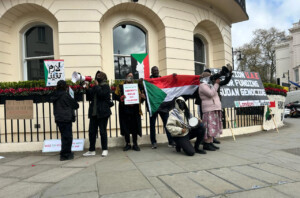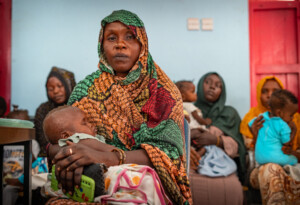UN Humanitarian chief calls for more aid to 7.1 million vulnerable people in Sudan
At the end of a three-day visit to Sudan, UN humanitarian chief Mark Lowcock today urged the international community to step up support to the humanitarian response to 7.1 million vulnerable people and invest in the country’s social-economic development.
“Unimpeded and sustained humanitarian access to people in need across Sudan is critical for the delivery of relief,” he said.
The UN Office for the Coordination of Humanitarian Affairs (OCHA) in Sudan reported in a press statement today that Under-Secretary-General for Humanitarian Affairs and Emergency Relief Coordinator Lowcock met government officials and humanitarian partners, and visited settlements for displaced people in Murta and Kulba in South Kordofan.
 World Food Programme trucks in North Darfur, February 2014 (Unamid)
World Food Programme trucks in North Darfur, February 2014 (Unamid)
At the end of a three-day visit to Sudan, UN humanitarian chief Mark Lowcock today urged the international community to step up support to the humanitarian response to 7.1 million vulnerable people and invest in the country’s social-economic development.
“Unimpeded and sustained humanitarian access to people in need across Sudan is critical for the delivery of relief,” he said.
The UN Office for the Coordination of Humanitarian Affairs (OCHA) in Sudan reported in a press statement today that Under-Secretary-General for Humanitarian Affairs and Emergency Relief Coordinator Lowcock met government officials and humanitarian partners. He visited settlements for displaced people in Marta and Kulba in South Kordofan. The villages, located north of Kadugli, have appeared in Radio Dabanga news reports about leukaemia cases in January this year.
“Millions of people face serious and growing humanitarian needs. Many have suffered for the past 15 years, but we cannot let them slide back into a situation where they become completely dependent on humanitarian assistance,” Lowcock said, urging the international donor community to support the immediate, life-saving response. He also underlined the need to scale up longer-term development assistance to help Sudan move beyond recurrent cycles of emergency assistance, and help build resilience.
Security situation
Lowcock welcomed the Sudanese government’s efforts to improve humanitarian access to most locations in Sudan, including those controlled by non-state armed groups. Unilateral ceasefires have improved the security situation across Darfur, South Kordofan and the Blue Nile.
“However, skirmishes in recent weeks between armed groups in pockets of Darfur’s Jebel Marra region have caused a renewed wave of internal displacement,” the statement reads.
Lowcock urged all parties to the conflict in Sudan to allow the humanitarian community to bring assistance to people in need, and called for further measures to improve the operating environment for humanitarian agencies.
“Unimpeded and sustained humanitarian access to people in need across Sudan is critical for the delivery of relief” – UN humanitarian chief Mark Lowcock
“It is critical to strengthen social protection mechanisms for the most vulnerable, including returnees, internally displaced people and host communities,” Lowcock said. He expressed particular concern for women and children and the need to protect them from sexual violence.
The humanitarian chief also commended the generosity of the Sudanese government and people in hosting some 1.2 million refugees this year, including over 770,000 from South Sudan. He urged the international community to provide more support to Sudan to help meet these costs.
Complex
Sudan’s humanitarian situation has become increasingly complex as recent food price increases have left many additional people unable to afford enough to eat. In addition, recent fuel shortages have affected humanitarian agencies’ ability to deliver assistance to vulnerable communities.
The UN-coordinated Humanitarian Response Plan for 2018 now appeals for $1.4 billion and requirements may rise further as people become increasingly vulnerable due to the economic situation. So far this year, donors have provided some $229 million.











 and then
and then